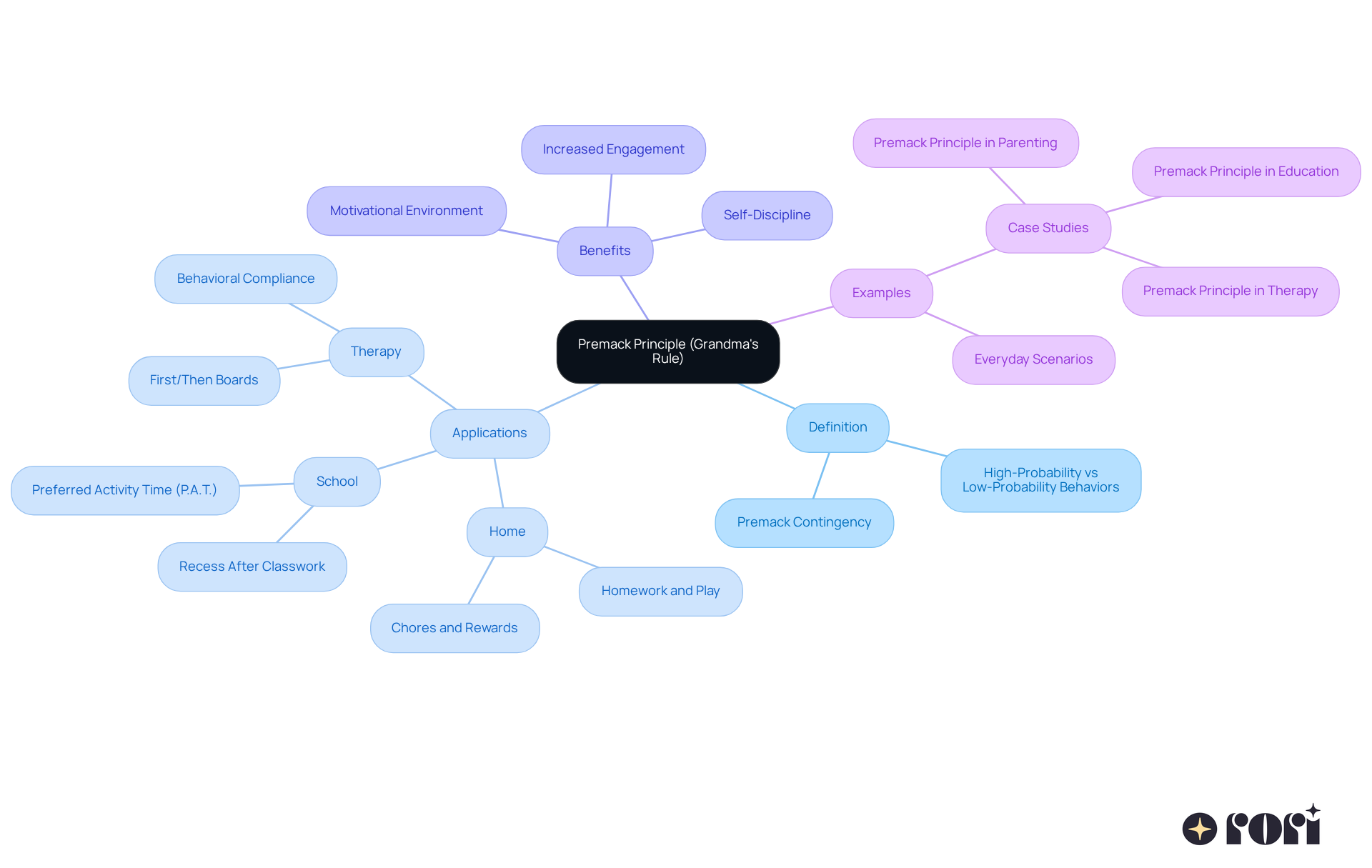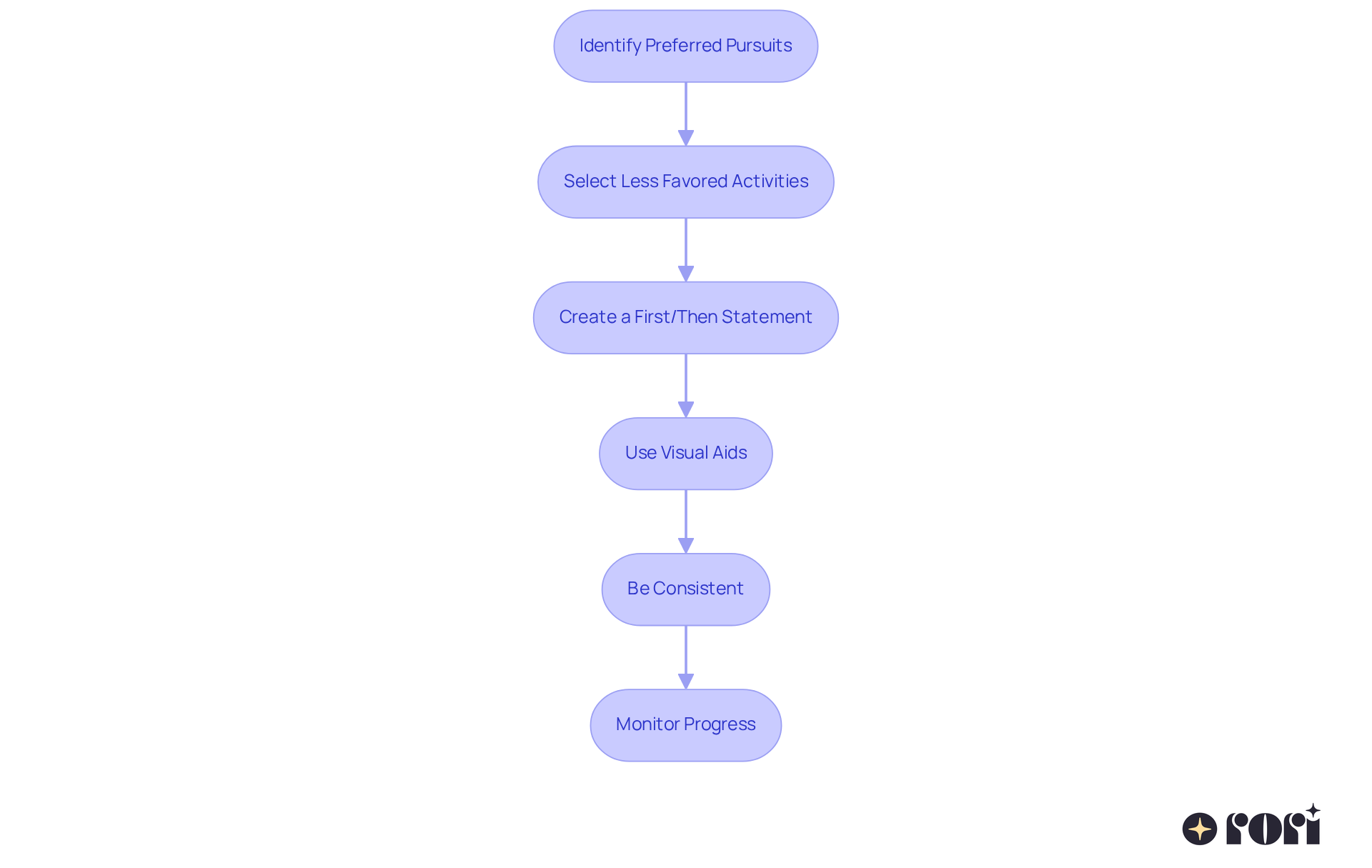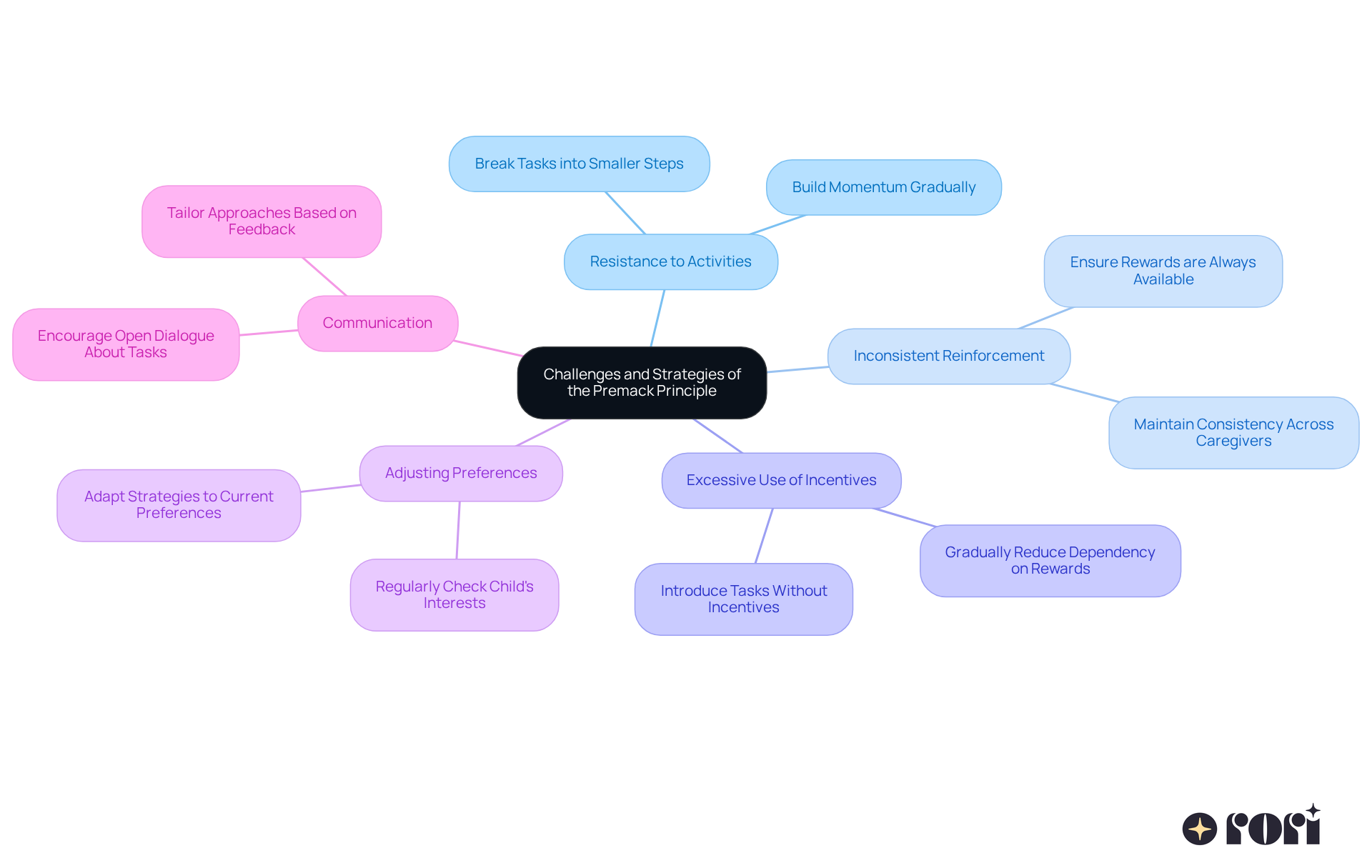This article dives into the Premack Principle, often affectionately called 'Grandma's Rule.' It’s all about motivating our little ones by tying fun activities to those tasks they might not be so keen on. Research shows that this approach can really boost task completion rates, especially for kids with autism and ADHD. By creating a motivating environment, we help nurture responsibility and self-discipline in our children.
As parents, we know the challenges of getting kids to tackle chores or homework. Imagine this: your child loves playing video games but dreads cleaning their room. By linking game time to tidying up, you’re not just making it easier for them to get started; you’re also teaching them valuable lessons about responsibility. It’s a win-win!
So, how can you start implementing this in your home? Think about the activities your child enjoys and how you can connect those to less favored tasks. Maybe it’s a favorite snack after finishing homework or extra playtime after chores. The key is to create that motivating environment where they feel encouraged to take on responsibilities.
Let’s explore this together! Remember, you’re not alone in this journey. We’re here to help you every step of the way! Share your experiences or tips in the comments below; we’d love to hear from you!
Navigating the world of motivating children can sometimes feel like wandering through a tricky maze, especially when daily tasks seem a bit dull. That’s where the Premack Principle, affectionately known as 'Grandma's Rule,' comes into play! It’s a fantastic strategy for parents looking to boost their kids' engagement and sense of responsibility by tying fun activities to those less exciting chores.
But let’s be real—implementing this principle isn’t always straightforward. How can parents keep their approach consistent and motivating without falling into the trap of relying too much on rewards? In this article, we’ll dive into some practical steps and strategies for mastering the Premack Contingency. Together, we’ll uncover valuable insights that can help create a positive and productive atmosphere at home. Let’s explore this journey together!
The Premack Principle, often called 'Grandma's Rule,' illustrates the premack contingency, which states that more enjoyable activities can help motivate us to tackle the less fun ones. Think about it: if your child wants to dive into their favorite video game, they might first need to finish that not-so-fun homework assignment. This principle is a game-changer for parents, creating a clear path for behavior change. By linking responsibilities to fun activities, you can encourage your kids to get things done. For instance, you might say, "Finish your homework, and then we can play outside!" This shows how a fun activity can support a less appealing task.
Research backs this up! The premack contingency has been shown to boost engagement, especially for kids with autism and ADHD, by creating a motivating environment. Parents who use this approach often see their kids completing tasks more willingly, as they look forward to the reward at the end. And it doesn’t stop at home; this principle works wonders in schools and therapy settings too. Therapists often use tools like first/then boards to help kids visualize what they need to do and what they’ll get in return. By embracing the premack contingency, you can create a positive atmosphere that encourages responsibility and self-discipline, ultimately leading to better behavior overall. Let’s explore this together!

To effectively implement the Premack Principle in your daily routines, let’s break it down into some simple steps:
Identify Preferred Pursuits: Start by figuring out what your child loves to do most. Is it playing outside, watching their favorite show, or diving into video games? Knowing these preferences is key! Kids are much more likely to jump into tasks when they are aware of the premack contingency that something fun is waiting for them.
Select Less Favored Activities: Next, think about the chores or tasks your child tends to avoid. Maybe it’s cleaning their room, finishing homework, or brushing their teeth. Recognizing these less desirable activities can help you create effective motivation strategies based on the premack contingency.
Create a First/Then Statement: Use clear and simple language to set expectations. For instance, you might say, "First, you need to clean your room, then you can play outside." This clarity helps your child understand the order of activities and the rewards that follow, which reinforces the important ABA principles of premack contingency.
Use Visual Aids: Visual schedules or charts can be super helpful! Consider using tools like LessonPix to create customizable visuals that illustrate the First/Then concept. These aids can really boost understanding, especially for kids with autism, by providing tangible representations of tasks and rewards. It’s all about making things clearer and more engaging!
Be Consistent: Consistency is crucial! Regularly applying the premack contingency in various situations reinforces its effectiveness. Over time, your child will start to connect completing less enjoyable tasks with getting to do what they love, a process that illustrates the premack contingency, leading to better compliance and motivation. Your involvement in this process is so important, as it creates a supportive environment that complements any professional help they might be receiving.
Monitor Progress: Keep an eye on how your child responds to this approach. Simple tracking methods, like a checklist or a progress chart, can help you assess their engagement. Research shows that kids can see a 30% increase in task completion rates when their favorite activities are linked to less favored tasks. As David Premack wisely noted, "The goal is to inspire young individuals to engage in activities that are crucial for their growth, thus enhancing their autonomy." By empowering yourself with these ABA principles and strategies, you can truly enhance your child's behavioral outcomes and overall development.
Let’s explore this together! Your journey as a caregiver is so important, and we’re here to help you every step of the way!

While the Premack Principle can be a fantastic tool for behavior modification, many parents find themselves facing a few bumps along the way. Let’s dive into some common challenges and explore effective strategies to tackle them together!
Resistance to Activities: It’s not uncommon for kids to push back when it comes to finishing less preferred tasks. To help with this, try breaking activities into smaller, manageable steps. For instance, instead of asking them to clean their entire room, start with a simple request like picking up their toys. This gradual approach can really help build momentum and ease that resistance.
Inconsistent Reinforcement: Consistency is key! Make sure that the preferred activity is always available as a reward. If your child completes their assignment but doesn’t receive the incentive, they might feel disheartened and less motivated for future tasks. Keeping that reward consistent can make a world of difference.
Excessive Use of Incentives: While incentives can be super effective, relying on them too much can lead to dependency. If every task is tied to a reward, your child might struggle to finish activities without that extra push. Gradually introduce tasks that can be completed without an incentive to help nurture their intrinsic motivation and self-reliance.
Adjusting Preferences: Kids’ interests can change faster than you can say "what’s for dinner?" Regularly check in on what activities your child enjoys and adjust your strategies accordingly. This way, the incentives remain motivating and relevant.
Communication: Open communication is so important! Encourage your child to share their feelings about tasks and rewards. This dialogue can help you tailor your approach to better meet their needs and preferences.
By proactively addressing these challenges, you can significantly enhance the effectiveness of the premack contingency within your parenting strategies. This leads to improved engagement and cooperation from your little ones. Let’s explore this together! We’re here to help you every step of the way!

The Premack Principle is a fantastic tool for parents looking to boost their kids' motivation and help them tackle those less enjoyable tasks. By linking fun activities to responsibilities, caregivers can create a framework that not only encourages kids to complete their tasks but also helps them develop essential life skills like responsibility and self-discipline. This approach can really transform daily routines and create a positive environment for growth and development.
Throughout the article, we’ve explored some key strategies for putting the Premack Principle into action. We talked about:
Consistency and monitoring progress are crucial, too! Plus, we shared practical solutions for common challenges, like:
By tackling these issues, parents can make the most of the Premack Principle, leading to better engagement and cooperation from their little ones.
Ultimately, embracing the Premack Principle is about so much more than just checking off tasks; it’s about empowering your children to take initiative and develop a sense of autonomy. By using these strategies, you can create a more harmonious and productive household while equipping your kids with the skills they need for future success. Adopting these techniques not only improves behavior but also strengthens the bond between you and your child, making the parenting journey even more rewarding. Let’s explore this together!
What is the Premack Principle?
The Premack Principle, also known as 'Grandma's Rule,' illustrates that more enjoyable activities can motivate individuals to complete less enjoyable tasks.
How does the Premack Principle work?
It works by linking a desired fun activity to the completion of a less appealing task. For example, a child might need to finish their homework before playing their favorite video game.
Why is the Premack Principle important for parents?
It provides a clear strategy for encouraging behavior change in children by making responsibilities more appealing through the promise of enjoyable rewards.
How does research support the Premack Principle?
Research indicates that the premack contingency enhances engagement, particularly for children with autism and ADHD, by creating a motivating environment that encourages task completion.
Where else can the Premack Principle be applied besides home?
The principle is also effective in schools and therapy settings, where therapists might use tools like first/then boards to help children visualize their tasks and rewards.
What outcomes can parents expect by using the Premack Principle?
Parents can expect their children to complete tasks more willingly, as they look forward to the enjoyable activity that follows, leading to better overall behavior and self-discipline.